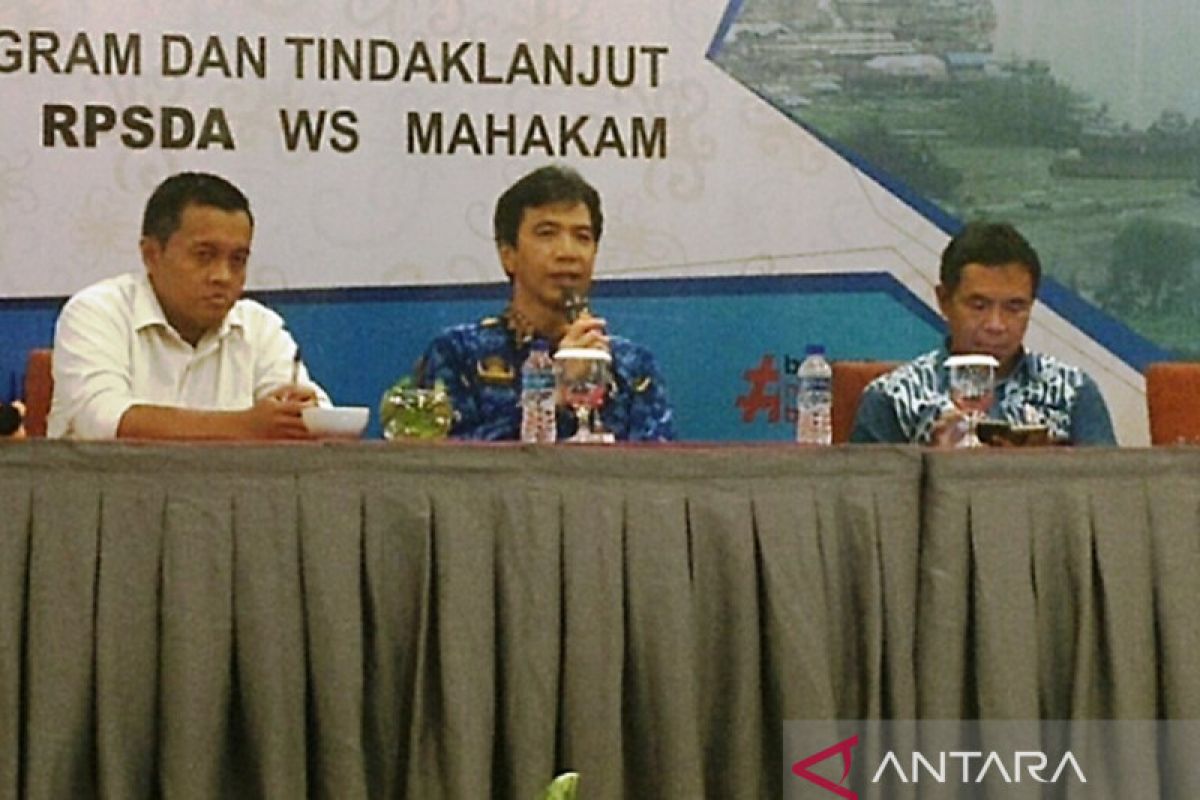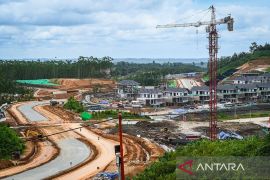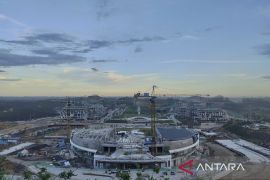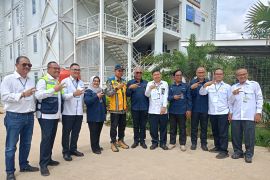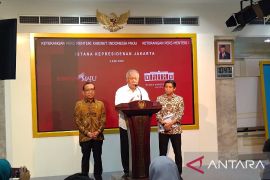"The four dams are the Sepaku Semoi Dam, the Batu Lepek Dam, the West IKN Water Resources Dam, and the South IKN Water Resources Dam," Director of Basic Facilities and Infrastructure of OIKN Agus Ahyar noted in Balikpapan, East Kalimantan, on Thursday.
Ahyar remarked that the Batu Lepek Dam is located in Jonggon Village, Loa Kulu Sub-district, Kutai Kartanegara District, and is capable of producing up to 4,300 liters of raw water per second.
Meanwhile, the Sepaku Semoi Dam is located in the villages of Argomulyo and Suko Mulyo in Sepaku Sub-district, with a capacity to produce 2,500 liters of raw water per second.
Moreover, the West IKN Water Resources Dam in Sepaku Sub-district and Sukaraja Village is capable of producing up to 5,710 liters per second of raw water.
Furthermore, the South IKN Water Resources Dam in Pemaluan Village, Sepaku Sub-district, is able to produce 1,650 liters of raw water per second.
Ahyar noted that IKN will implement a sponge city concept or a water-friendly city that will immediately absorb water into the ground during rains, so as to increase water supply not only from dams, reservoirs, or ponds but also from rainwater with environmentally friendly drainage.
In an effort to manage excess rainwater, various methods have been applied, including collecting water through reservoirs to be used immediately or being stored in natural water bodies, he remarked.
It will be followed by distributing it to the nearest riparian to reduce the burden on the river downstream, including maintaining the applied system to become efficient and sustainable, Ahyar explained.
Meanwhile, environmental damage will be closely related to climate change that is marked by rising sea levels, increase in air temperature, and changes in rain duration and intensity.
Along with the development of IKN, Ahyar said the land will be built into roads, parking areas, and various other buildings with cement bases that hamper rainwater absorption.
"For this matter, a low-impact development drainage system has been prepared to hold rainwater runoff, so that it can be absorbed into the ground while simultaneously increasing aquifer reserves and filter rainwater and pollutants from surface runoff," he remarked.
Related news: Nusantara development must involve locals: IKN Authority
Related news: East Kalimantan develops 1.32-million hectare land for IKN agriculture
Translator: M. Ghofar, Resinta S
Editor: Rahmad Nasution
Copyright © ANTARA 2023
